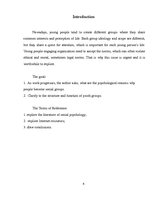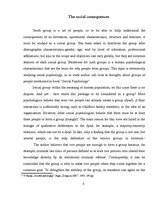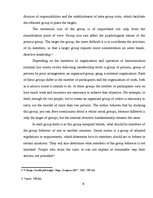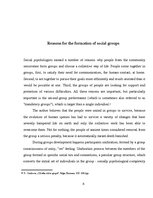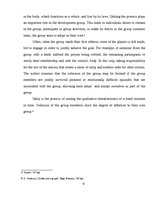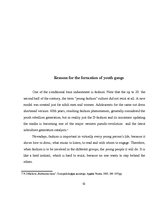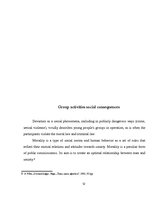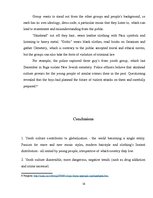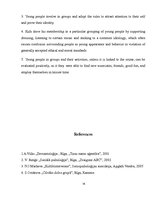-
Youth Groups
| Nr. | Sadaļas nosaukums | Lpp. |
| Introduction | 4 | |
| 1. | The social consequences | 5 |
| 2. | Reasons for the formation of social groups | 8 |
| 3. | Reasons for the formation of youth gangs | 10 |
| 4. | Group activities social consequences | 12 |
| Conclusions | 14 | |
| References | 13 |
Conclusions
1. Youth culture contributes to globalization - the world becoming a single entity. Passion for more and new music styles, modern hairstyle and clothing's Instant distribution - all united by young people, irrespective of which country they live.
2. Youth culture discernible, more dangerous, negative trends (such as drug addiction and crime increase).
3. Young people involve in groups and adopt the rules to attract attention to their self and prove their identity.
4. Kids show his membership in a particular grouping of young people by supporting dressing, listening to certain music and sticking to a common ideology, which often causes confusion surrounding people as young appearance and behavior in violation of generally accepted ethical and moral standards.
5. Young people in groups and their activities, unless it is linked to the crime, can be evaluated positively, as it they were able to find new associates, friends, good fun, and employ themselves in leisure time.
…
Jauniešu grupējumi Youth group is a set of people, so to be able to fully understand the consequences of its formation, operational characteristics, structure and function, it must be studied as a social group. Has been taken to distribute the group after demographic characteristics-gender, age, and by level of education, professional affiliations, but also to the scope and objectives can vary greatly, but they are common features of each social group. Backbone for such groups is a human psychological characteristics that are the basis for why people form groups. This topic is extensively studying social psychology, so in work author will look at thoughts about groups of people mentioned in book "Social Psychology". Social group within the meaning of human population, on this issue there is no dispute. And yet - how much this package to be considered as a group? Most psychologists believe that even two people can already create a group (dyad), if their interaction is sufficiently strong, such as childless family members, or the idea of an organization. However, other social psychologists believe that there must be at least three people to form a group (triangle). The main reason for this view are listed in the triangle of qualitative differences in the dyad, for example, a majority-minority relations, which can not be a dyad. In fact, only a finding that the group is not one, but several people, is the only definition of the various groups in common. The author believes that two people are enough to form a group because, for example, criminal law class of persons defined as at least two persons who shared their knowledge directly by an intentional criminal offense. Consequently, it can be concluded that the group is able to make two people when they come together for a common goal. To strengthen the stability of the group, its members can agree on the




